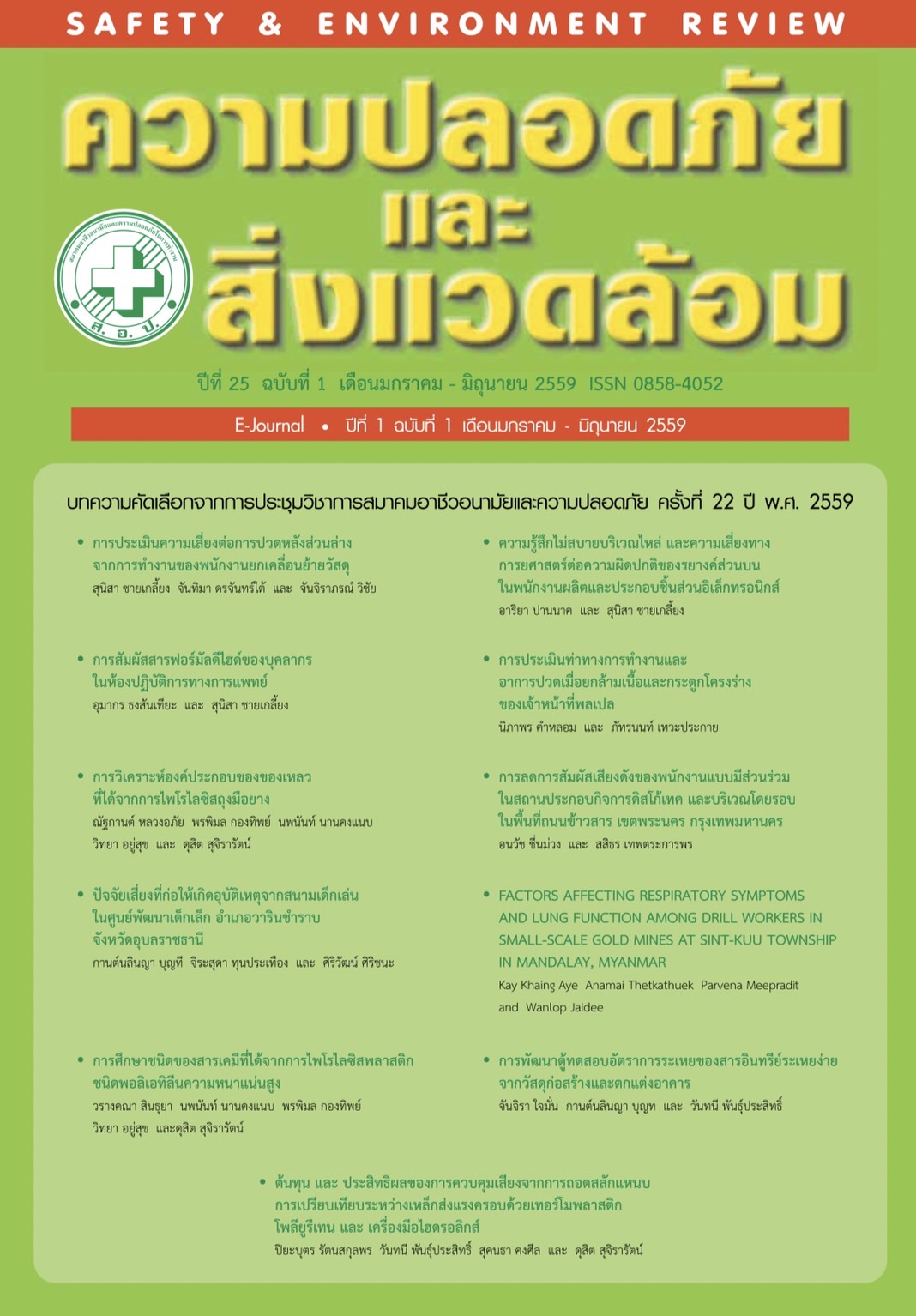FACTORS AFFECTING RESPIRATORY SYMPTOMS AND LUNG FUNCTION AMONG DRILL WORKERS IN SMALL-SCALE GOLD MINES AT SINT-KUU TOWNSHIP IN MANDALAY, MYANMAR
Kay Khaing Aye
Abstract
The objective of this study is to identify factors affecting the respiratory impairments (risk of respiratory symptoms and impair lung function) of drill workers in small-scale gold mines. Cross-sectional descriptive study of 230 miners from eight small-scale gold mines in Myanmar's Mandalay Region was conducted. Respiratory symptoms were assessed using a respiratory questionnaire modified from the American Thoracic Society and a lung function test was assessed by spirometry according to OSHA recommendations. Six samples of respirable dust were collected and analyzed by X-ray Fluorescence method in the Laboratory. The respiratory symptoms found among miners were cough (43.9%), phlegm (55.2%), wheezing (50.5%), shortness of breath (37.8%), breathlessness (25.6%) and chest tightness (1.7%). Lung functions revealed restriction in 43.5% and obstruction in 20.9% of miners. The mean concentration of respirable silica dust was 0.34 mg/m3, which is seven times above the REL of NIOSH. There was a significant (p<0.05) relationship between respiratory symptoms and (1) age (OR: 1.04, 95%CI 1.00, 1.08) for irritation symptoms and (OR: 1.04, 95%CI 0.99, 1.07) for dyspnoea symptoms (2) smoking (OR: 2.89, 95% CI 1.62, 5.17) for irritation symptoms and (OR: 2.79, 95% CI 1.56, 5.00) for dyspnoea symptoms. There was a reverse relationship between lung function test results and use of masks (OR: 0.53, 95%CI 0.30–0.92). Chronic exposure to respirable silica dust above the REL by miners who used a pneumatic jackleg drill to loosen the ores the risk of respiratory symptoms and impaired lung function. The risk increases with age and cigarettes smoking.
Keywords : Silica exposure / Lung function / Respiratory symptoms / Drill workers / Myanmar
Published
Issue
Section
License
Copyright (c) 2022 SAFETY & ENVIRONMENT REVIEW

This work is licensed under a Creative Commons Attribution-NonCommercial-NoDerivatives 4.0 International License.
This article is published under a Creative Commons Attribution-NonCommercial-NoDerivatives 4.0 International License (CC BY-NC-ND 4.0), which allows others to share the article with proper attribution to the authors and prohibits commercial use or modification. For any other reuse or republication, permission from the journal and the authors is required.



